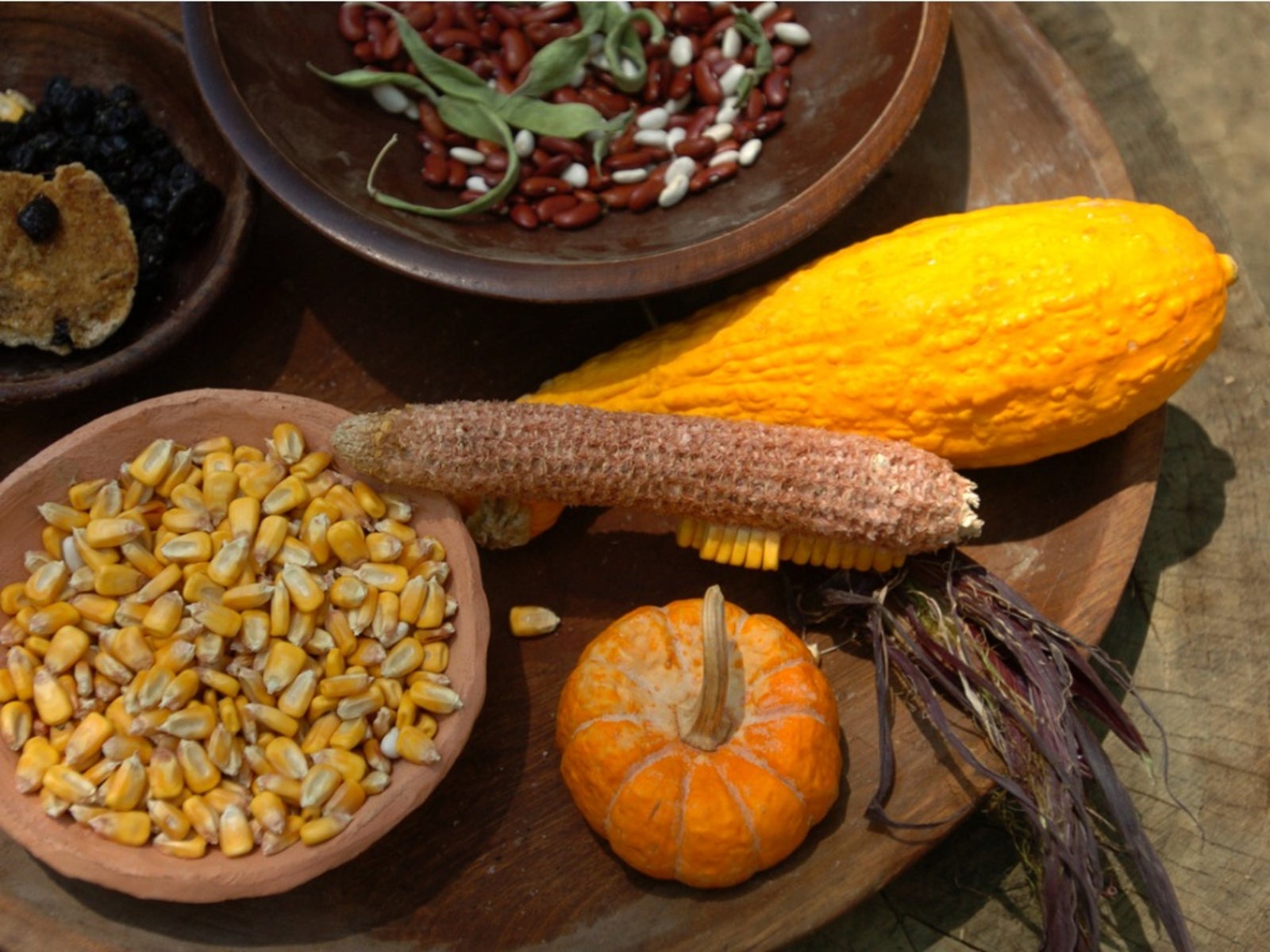A Three Sisters Garden - Beans, Corn & Squash


One of the best ways to get children interested in history is to bring it into the present. When teaching children about Native Americans in U.S. history, an excellent project is to grow the three Native American sisters: beans, corn, and squash. When you plant a three sisters garden, you help to bring an ancient culture to life. Let's look at growing corn with squash and beans.
Story of the Three Native American Sisters
The three sisters way of planting originated with the Haudenosaunee tribe. The story goes that beans, corn, and squash are actually three Native American maidens. The three, while very different, love each other very much and thrive when they are near each other. It is for this reason that the Native Americans plant the three sisters together.
How to Plant a Three Sisters Garden
First, decide on a location. Like most vegetable gardens, the three Native American sisters garden will need direct sun for most of the day and a location that drains well. Next, decide on which plants you will be planting. While the general guideline is beans, corn, and squash, exactly what kind of beans, corn, and squash you plant is up to you.
- Beans- For the beans you will need a pole bean variety. Bush beans can be used, but pole beans are more true to the spirit of the project. Some good varieties are Kentucky Wonder, Romano Italian, and Blue Lake beans.
- Corn- The corn will need to be a tall, sturdy variety. You do not want to use a miniature variety. The kind of corn is up to your own taste. You can grow the sweet corn that we commonly find in the home garden today, or you can try a more traditional maize corn such as Blue Hopi, Rainbow, or Squaw corn. For extra fun you can use a popcorn variety too. The popcorn varieties are still true to Native American tradition and fun to grow.
- Squash- The squash should be a vining squash and not a bush squash. Typically, winter squash work best. The traditional choice would be a pumpkin, but you can also do spaghetti, butternut, or any other vine growing winter squash that you would like.
Once you have chosen your beans, corn, and squash varieties you can plant them in the chosen location. Build a mound that is 3 feet (1 m.) across and around a foot (31 cm.) high. The corn will go in the center. Plant six or seven corn seeds in the center of each mound. Once they have sprouted, thin to just four. Two weeks after the corn has sprouted, plant six to seven bean seeds in a circle around the corn about 6 inches (15 cm.) away from the plant. When these sprout, also thin them to just four. Last, at the same time as you plant the beans, also plant the squash. Plant two squash seeds and thin to one when they sprout. The squash seeds will be planted on the edge of the mound, about a foot (31 cm.) away from the bean seeds. As your plants grow, gently encourage them to grow together. The squash will grow around the base, while the beans will grow up the corn. A three Native American sisters garden is a great way to get kids interested in history and gardens. Growing corn with squash and beans is not only fun, but educational too.
Gardening tips, videos, info and more delivered right to your inbox!
Sign up for the Gardening Know How newsletter today and receive a free copy of our e-book "How to Grow Delicious Tomatoes".

Heather Rhoades founded Gardening Know How in 2007. She holds degrees from Cleveland State University and Northern Kentucky University. She is an avid gardener with a passion for community, and is a recipient of the Master Gardeners of Ohio Lifetime Achievement Award.
-
 Moody Blooms For Spring: 8 Types Of Black Flowers To Add Drama To Spring Displays
Moody Blooms For Spring: 8 Types Of Black Flowers To Add Drama To Spring DisplaysFrom midnight burgundies to inky violets, several types of black flowers can enrich and embolden a spring display. Try these brooding bloomers for a moody garden
By Tonya Barnett
-
 Can Snake Plants Live Outside? Everything You Need To Know For Snake Plants Al Fresco
Can Snake Plants Live Outside? Everything You Need To Know For Snake Plants Al FrescoSnake plants can live outside given the right conditions, but be careful that they don't take over! Learn the best way to use snake plants in your landscape.
By Mary Ellen Ellis